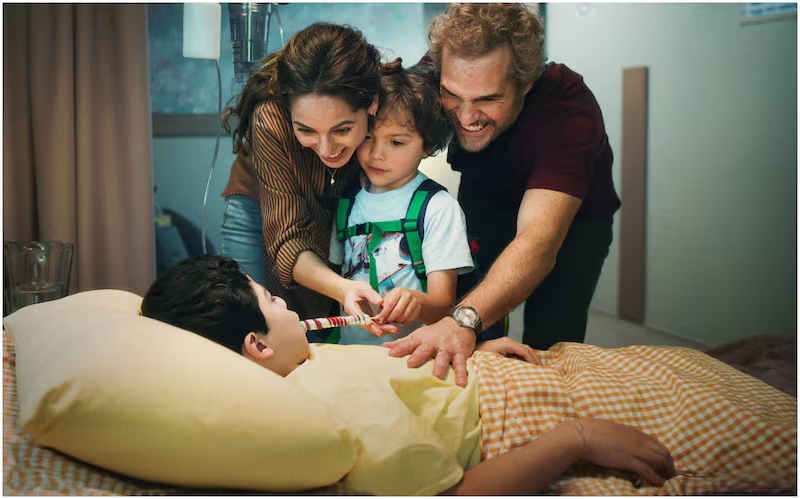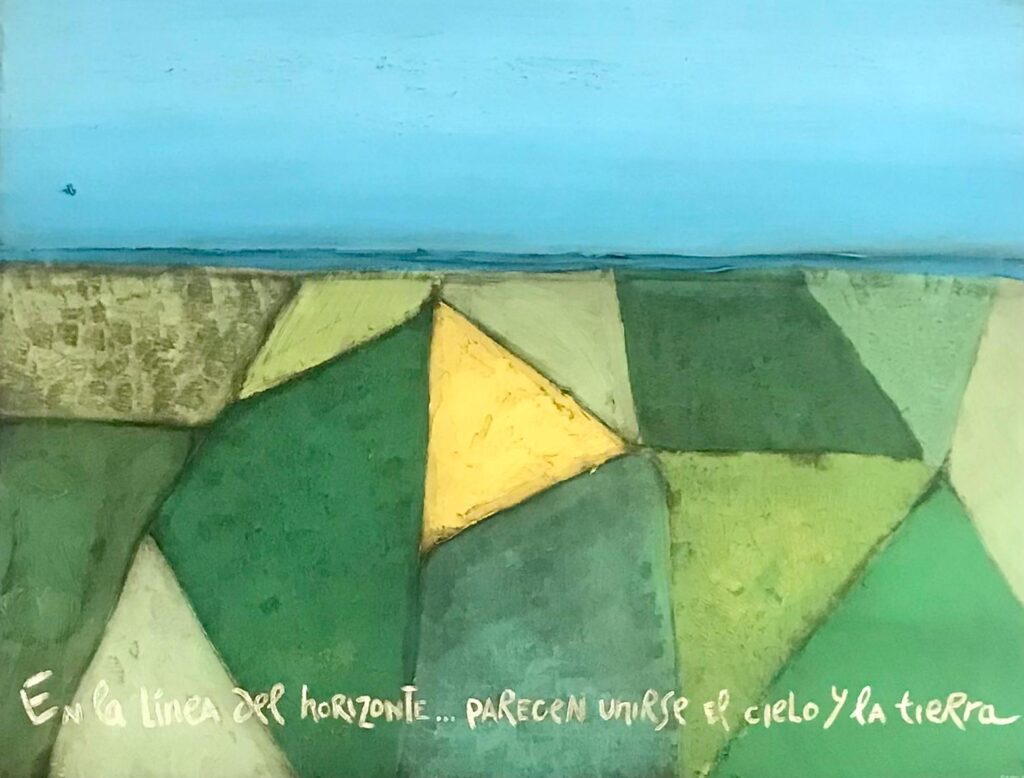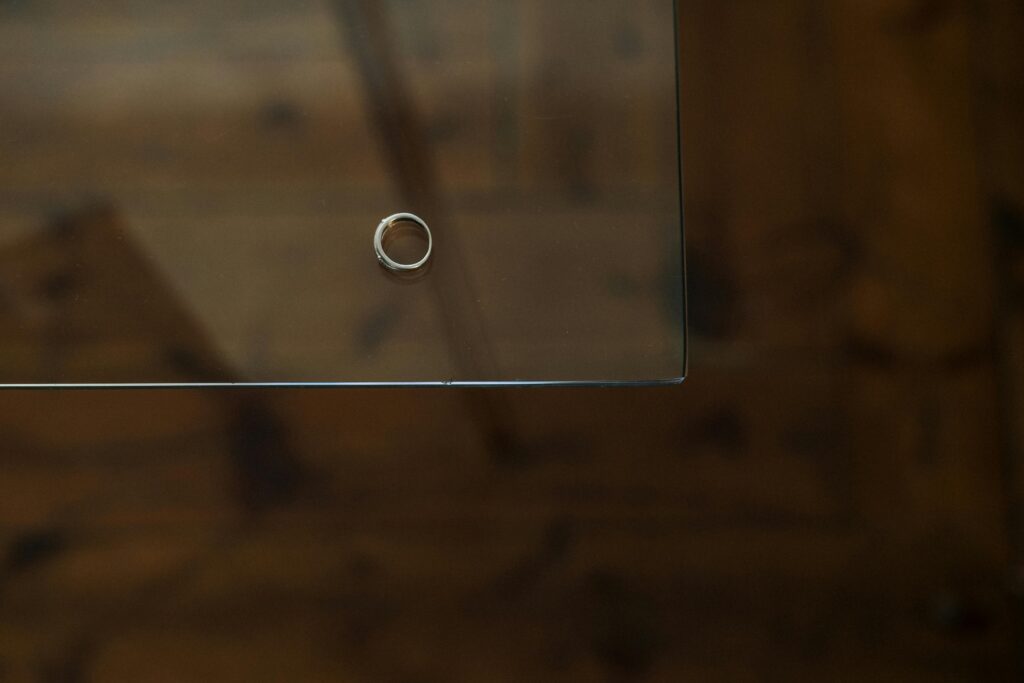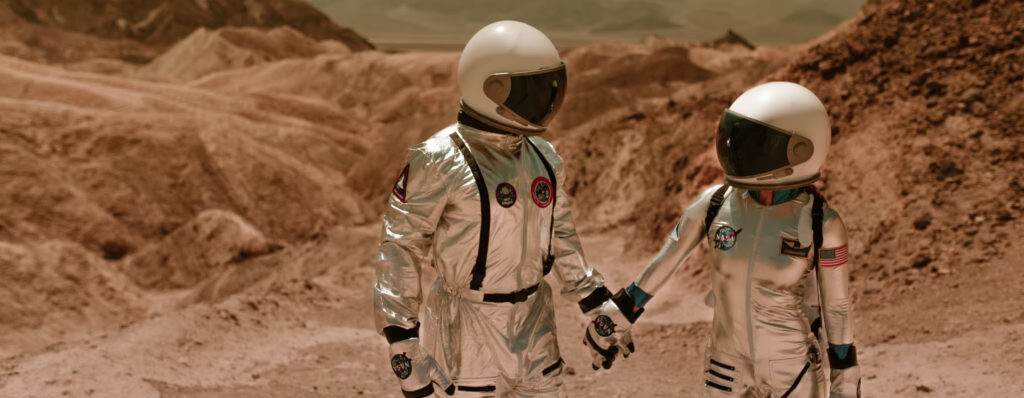The inspiring story of a family with a child with cerebral palsy
“The two hemispheres of Lucca”

What is the daily life of families who have children with a disability like? The film “The two hemispheres of Lucca” shows this ignored reality, based on the story of a family with a child born with cerebral palsy. The film by Mexican filmmaker Mariana Chenillo is a lesson in unconditional love, overcoming and hope. However, the inspiring story also bluntly reveals the obstacles and challenges that parents must face in a society that views diversity as a scourge to be eradicated through eugenic practices.
Bárbará and Andrés are a happy couple because they are going to be parents. But, a problem during childbirth causes events to develop in a very different way than they had imagined. Lucca is born with severe cerebral palsy, as a result of a respiratory crisis in the mother (Bárbara Mori) that leaves serious after-effects on the child’s brain. Ten days after birth, the medical diagnosis confirms the extent of the injuries that neurologists consider irreversible, ruling out Lucca (Julián Tello) being able to walk, talk, interact with others or even recognise his own parents. This situation is aggravated by increasingly frequent epileptic seizures. The difficulties in ingesting food also make surgery necessary to place a gastric button to guarantee his nutritional needs and facilitate the administration of medication.
However, what to the eyes of the spectator may seem like an insurmountable obstacle course only strengthens the unity of a family that, after the birth of Lucca, grows with the arrival of Bruno and does not lose hope that new therapies or drugs can improve the living conditions of the most vulnerable member. Indeed, Barbara and her husband, Andrés (Juan Pablo Medina) know that there is no cure for their son’s cerebral palsy, but they trust that he can benefit from scientific advances and that future treatments will improve his motor skills and his ability to communicate with the people around him. Lucca is a gift for everyone, a ferment of unconditional love, a source of meaning and vital sense for an environment that grows in generosity, giving and joy of living. A single smile from Lucca melts his parents, magically makes any tantrum from his brother Bruno disappear and, as the film progresses, it also hits the heart and transforms the viewers’ view of diversity.
The inspiring story of the Mexican filmmaker, Mariana Chenillo, based on real events and which is sweeping Netflix, has a turning point when Lucca’s health suddenly deteriorates because the epileptic seizures are increasingly common and intense and harm the little boy’s neurological state. The worst diagnoses invite the family to wait for a painful outcome when a ray of hope appears. Barbara learns that a hospital in Bangalore, one of the most technologically advanced capitals of India, carries out an experimental treatment that is promising for patients with neurological injuries. Barbara and Andrés do not hesitate, mortgage their house and travel from Mexico to India in order to meet Dr. Rajah Kumar (Danish Husain), after learning about the positive results in adult patients whose treatment had improved brain connections and the regeneration of damaged tissues. After obtaining the necessary authorizations, Lucca is the first child to undergo a non-invasive therapy that ends up allowing him to develop speech, improve his strabismus and be able to relate better to his environment. His rapid progress still surprises the medical team at the Mexican hospital, who initially advised against the trip and showed radical skepticism towards this new treatment.
Everyday difficulties and lack of support
The film The Two Hemispheres of Lucca honestly brings to light an ignored reality that has to do with the everyday difficulties faced by families with children with some kind of functional diversity. The director of the film also shows how many of these sufferings could be alleviated, and even disappear, with more empathy and support from society and public administrations.
Indeed, the emotional and spiritual journey of Barbara, Andres, Bruno and Lucca is not an easy path because being born and living in the world with a disability means, even today, suffering social disadvantages that prevent the full inclusion of the most vulnerable. In this sense, the film also reveals how parents end up losing their jobs because their companies consider that caring for a disabled child negatively affects the efficient performance of their work obligations. Loneliness makes them easy victims of unscrupulous people and scammers, a role played in this film by Dr. Jaramillo (Bill Rogers), who is more interested in economic benefits than in the good of the sick. Health insurance companies do not want to take charge of the costs of necessary therapies that end up being assumed by the parents alone. Added to this is an over-bureaucratization of public administrations that erases the face of those affected and those who live with functional diversity, applying policies based on utilitarian and financial criteria.
Nothing that has been said can be separated from the growing indifference towards the suffering of others or from an irrational idea that has been embedded in society, that bringing a disabled person into the world is a mistake because they will suffer life instead of living it, will bring nothing but sorrow to the family and constitutes a hindrance to a dehumanized model of society. Precisely, this perspective gives wings to eugenic practices that, in no case, respect the intrinsic dignity of the person or the value that human life deserves, independently of the specific conditions.
 Dignity, diversity and bioethics
Dignity, diversity and bioethics
The film invites a bioethical reflection from a vision of diversity that does not violate the respect for the dignity that makes everyone equal, as proposed by the personalist bioethical model. Reality places us before two radically opposed paths to correct the dramatic consequences of the erroneous relationship between disability and social disadvantage. One solution, which is unfortunately gaining ground, is the elimination of diversity. This gives moral legitimacy to denying the existence of those who are not considered people. Certainly, if there are no disabled people, the idea of a social scourge or disadvantage disappears. But another, more encouraging and humane path is to build societies that are capable of eliminating the view that relates disability with a lower value of the person and with a life in inferior conditions to others. This view would make it easier for any person affected by functional diversity to develop their life, with equal opportunities, without being excluded or discriminated against, but welcomed and benefiting from the help with care and upbringing that they deserve.
Of course, a biased interpretation of autonomy or individual rights does not adequately prepare us to face problems such as those pointed out in this film and others such as cloning, “children on demand” or genetic engineering. I conclude with some illuminating reflections by the philosopher and bioethicist Michael Sandel that are essential to our moral landscape: humility, responsibility and solidarity. In a social world that values domination and control, parenting is a school of humility because it invites us to accept the unexpected, says Sandel. This thinker warns that the loss of humanity multiplies responsibility to the extent that there is less to attribute to chance and more to choice. What does he mean? That solidarity consists in the appreciation of what is received because no one is fully responsible for his success. If chance were allowed to be replaced by choice, the character of human achievements and such would lose ground, and so would our recognition of a shared world. In other words, a tendency would prevail to consider that each person is entirely responsible for his success.
The consequence is not trivial, because those affected would not be deserving of compensation and solidarity, but rather considered as “unfit and in need of eugenic reparation.” This is how genetic control erodes solidarity and disregards the sense of inalienable, inviolable and unavailable rights. Sandel stresses: “The genetic revolution came to cure the disease, but it has stayed to tempt us with the horizon of optimizing our performance, designing our children and perfecting our nature. Our desire to see ourselves at the top of the world and dominating nature is an erroneous vision of freedom that threatens to suppress our appreciation of life as a gift and to leave us with nothing more to affirm or contemplate beyond freedom itself.”
Amparo Aygües – Master’s Degree in Bioethics from the Catholic University of Valencia – Member of the Bioethics Observatory – Catholic University of Valencia
Related

Emilio Girón: Stubbornness and Tinto de Verano
Exaudi Staff
30 March, 2025
5 min

Facing Divorce as a Christian Couple
Laetare
28 March, 2025
2 min

Mars Colonization: Technological Progress or Threat to Human Dignity?
Observatorio de Bioética UCV
28 March, 2025
9 min

The Good Smell of Coffee
Edistio Cámere
27 March, 2025
3 min
 (EN)
(EN)
 (ES)
(ES)
 (IT)
(IT)

